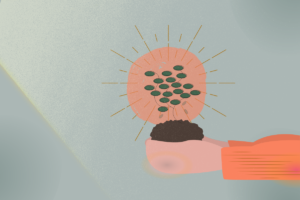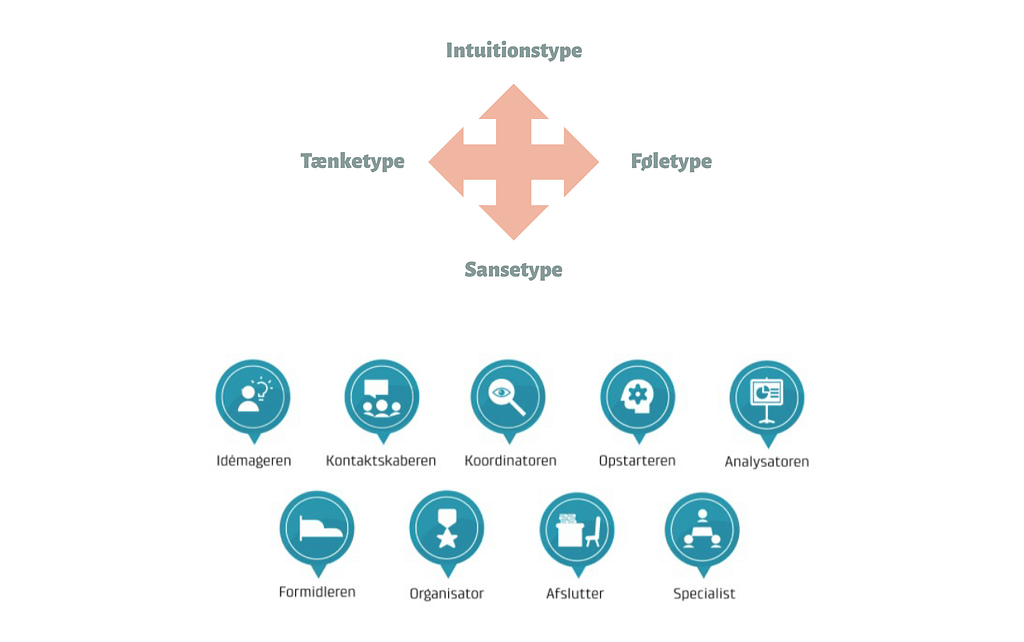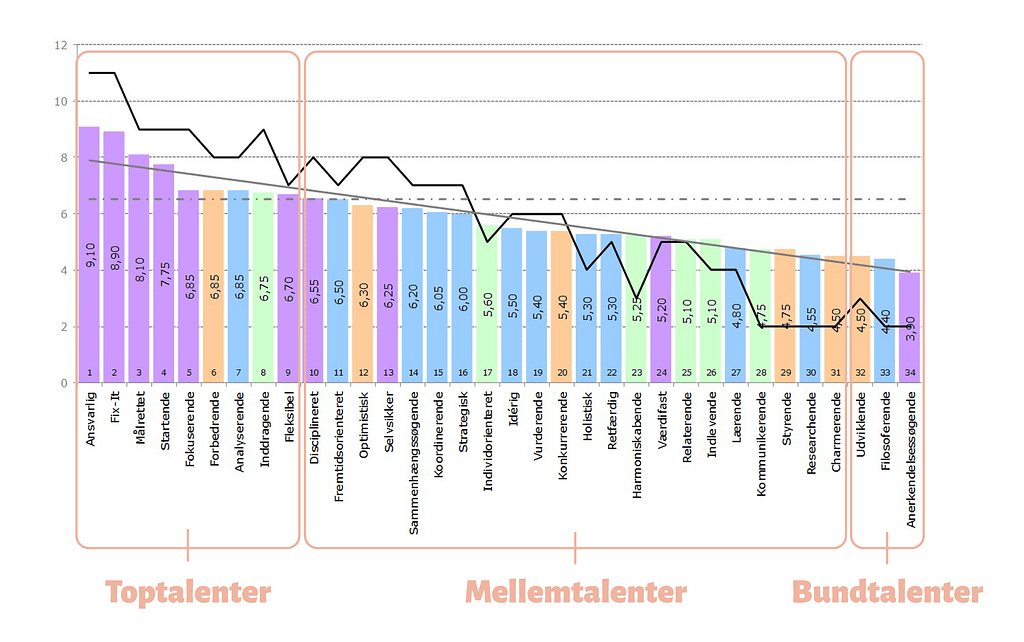

How do I find more meaning?
Here you can become inspired to finding purpose and meaning through knowledge about your exact talents.
You can probably rightly claim that organizational development has existed ever since humans started organizing themselves in units, but if we talk about organizational development as a professional term, it started with researchers in the US around 60-70 years ago. This covered the term of creating broad and pervasive changes.
Charlotte Reersted, owner of Reersted Empowering Potential and certified partner with TalentInsights, has written an article about the link between talents, types of people and organizational development.
divide
The researchers worked on figuring out what could make organizations more effective, based on a hypothesis about how bad communication, closedness and disclaimers were the reasons for swinging efficiency. For that reason, they researched what leadership, cooperation, motivation and communication meant in this relation.
In addition to this, organizational development is defined as the use of knowledge from behavior research for simultaneous optimization of both short- and far sighted efficiency in the organization, via improvement of structures and processes that support individual as well as group- and system development. To create a learning environment that maintains improvements across the organization, is also an important turning point.
There was agreement that a number of interventions were necessary, and that the driving people via these interventions, should impact cooperation patterns, communication areas and perceptions in the organization.
Wendell French and Cecil Bell who were behind the book “Organizational Development.” Behavioral Interventions for Organization Improvement” describes 13 different types of interventions, that can be used. Many of these are used by us today interchangeably; teambuilding, transversal activities, systematic feedback, development of personal and work related competencies, technological advancements and leadership development. Notice that there is focus on the soft parts, as well as cooperation and communication, and the hard parts like technology and structures.
Finally it is significant, that there is a clear strategy/plan for what it is, that you wish to achieve through the organizational development. In part to control and measure the process, but especially to be able to communicate clearly to everyone involved, what it is about.
I am fundamentally in agreement with the above in relation to how one completes an organizational development, and have throughout my 25 years in Human Resource departments or leadership of danish companies been through multiple of these. Though I have not been able to stop observing the reactions in the organization and especially kept an eye on, whether one was succesful with the wished changes.
And let me just say, that I have experienced succesful as well as less sucessful attempts at organizational development….
The common denominator for the less succesful has been changes, that were made primarily for the sake of changes and therefore didn’t make sense for the ones involved. Changes that meant, that work related tasks landed between two chairs, because things weren’t worked through before launching the changes. Or changes that weren’t cleared with important key people and therefore met strong resistance. Or changes that came so shortly after the latest changes, that the waves had not settled yet = things had not been normalized yet and the organization therefore could not handle more.
At the succesful they had made sure to prepare properly, involved the relevant people, had a clear goal with the changes, communicated clearly, made sure of essential education during the process as well as on going review and information. The leaders were dressed for the task, the right resources were prioritized and there was created a common understanding that we definitely would reach our goals.
As people we are very different, and that can also be explained by various personality tests that typically describe 4 fundamental types (based on Jungs theories) – or by Belbins definition of the 9 roles that needs to be filled, in order for you to solve a problem optimally.


The 4 types are seen in many different forms that have varying boundaries, so for the sake of understanding i define them as; the striving who is actionable, sets goals, makes decisions and makes sure things happen. the relating who has focus on the group and individuals and these well-being/good companionships and is naturally communicative, the thinkende who is full of ideas, curious and has the overview, and finally the influencing who sees possibilities in people as well as problems, and loves to move people.
In an organization, leadership as well as employees typically will consist of a mixture of both the 4 types and the 9 roles, and therefore it is my statement, that it is essential for succes, that the planning of organizational actions are completed by a group, that represents all 4 types and covers all 9 roles.
Let me explain further; If a leadership group primarily consists of striving and thinking types, then they are strong in analyzing and evaluating the situation, in starting and setting some goals and effectuate the plans. They might forget to consider what types of employees that are going on the journey, to understand their view of the world and secure that communication is done properly for these types.
On the other hand a leadership group that primarily consists of relating and influencing types, will be eminently good at relating to the individuals in the organization, that need to be moved, and be so busy considering and improving the plans, involving the relevant people and having focus on harmony, that they won’t get started and get the project going. and if they do, they risk losing focus and not having a clear strategical goal in place.
A leadership group consisting of their own and others types (also strengths/talents and weaknesses or as a minimum their preferred Belbin roles), and acknowledge everybody’s importance in the problem solving, as well as possible missing roles, will be better at thinking for all of the types in the organization, and thereby create a solution that is more balanced and hereby has a greater chance of reaching the goal for success.
Clifton is an american researcher, that for centuries has researched what it is, that gives people success in the workplace. Around the turn of the millenium, he released the book “Clifton Strengths” that describe the 34 thought patterns – strengths – talents or what we wish to call them, that is definite to make a difference in the relation to success. I prefer the word talents, and a talent here describes that, which you cannot just stop doing. It is seen in a behavior, that you can have difficulty controlling, and that you often won’t think about, you just do it and you are really good at it.
We all have a line of talents that are at the top and a smaller group of talents that are at the bottom, when we measure on the 34 talents per individual. It is not that crucial what talents we are talking about, but instead that we are well-versed in these, and understand that using them in our daily tasks is what gives us success.
When we work with tasks, where we use our toptalents, then we are provably more effective (in flow), make less mistakes, thrive, find meaning with our jobs and have more fun, and thereby are more ready for change and robust. A pure win-win for the employer as well as the employee!
If we on the other hand work with tasks, that require our bottom talents, then we take way longer with it and make far more mistakes. It is typically these tasks, that we are struggling with starting and where we procrastinate (and it is here we start considering switching jobs, when they take up too much).
The amount in between are called middle talents and here it is more “one to one” – it doesn’t cost extra energy to complete these tasks, but on the other hand it also doesn’t give energy.
A talent profile:



What if we drew in knowledge as well as the employees and the leaders talents in the workplace with organizational development? A so called talented organizational development.
Imagine a company, where we break the traditional silo’s/departments down and instead look at the content of the tasks. We look at whether the content speaks to the thinking types – there are 12 types of talents that do, to the striving types (10 talents), to the relating types (6 talents) or to the influencing types (6 talents) – and then we seperate the tasks in the organization to the talents, that are most optimal for solving the given types of tasks.
The departments will from here consist of people that have the same focus. People that have a common course of action to the tasks and understand eachother way better. There are differences in the talents in the 4 groups, but they are not strange to eachother, and thereby you can better optimize the distribution of the tasks, and secure overlap when there is absence.
It could for example be people with the talents Analyzing, Researching, Contextual and Inquiring. One common demoninator here is to sit down and use the necessary time to research things and appropriate the necessary knowledge, in order to fully understand the problems.
At the same time you can secure good leadership, by giving the assignment to a leader of the same type, because they will have an understanding as to how you best can optimize the employees work situation and secure that they can solve their tasks optimally. The leader also needs to have some other top talents, that secure that they keep the focus on success for the organization as a whole (or is supported in a type of buddy-arrangement of a leadership colleague with supporting talents). The solution needs a leadership group, that is trained in the talent thought process and acknowledge eachothers top- and bottom talents.
It is my belief, that just by focusing on the employee and leadership primarily will work with tasks, that fit their top talents, will be able to streamline a company by many percent (the factual number depends on how inappropriately things have been organized previously).
As an extra reward for future organizational development projects, you will be able to target the communication way more for the different types. It will be easy to point out the ambassadors, that will love to take the front, with new ways to do things, and on the other hand to point out those who will need the most support underway.
Knowledge about your talents also gives plenty of rewards – it becomes easier to recruit the right employees, because you know exactly what talents, it is that you need. Knowledge about your top and bottom talents and the 4 archetypes, makes it easier to understand differences and similarities and removes time consuming misunderstandings and conflicts, and thereby improves the cooperation. You will also experience that the employees are far more motivated and engaged, which has a tendency to rub off on the customers, and thereby not so rarely gives a better bottom line. The leaders experience the same and thereby increase satisfaction in the organization at all levels. It pleases everyone and therefore speaks positively about the workplace, which will raise it’s employer branding and make it easier to attract new employees.
I can therefore only recommend, that we stop making talentless organizational development and instead let us inspire by the above to secure a talented and successful organizational development.
Have fun.
–
Do you want to know more?
divide


Here you can become inspired to finding purpose and meaning through knowledge about your exact talents.


Congratulations! You have taken a step in the direction of a happier work day, easier resume writing or just a little more knowledge. No matter what has driven you here, we are happy for you being here. Talent development is a term that long has belonged to the sports world. But it isn’t just athletes that have talents – we all do.
The fight for qualified labor tightens. Are you in need of labor? Then unfortunately, you are not alone. The latest recruiting report from The Danish
Mandag – Torsdag
09:00 – 17:00
Fredag
09:00 – 16:00
0045 2240 8052